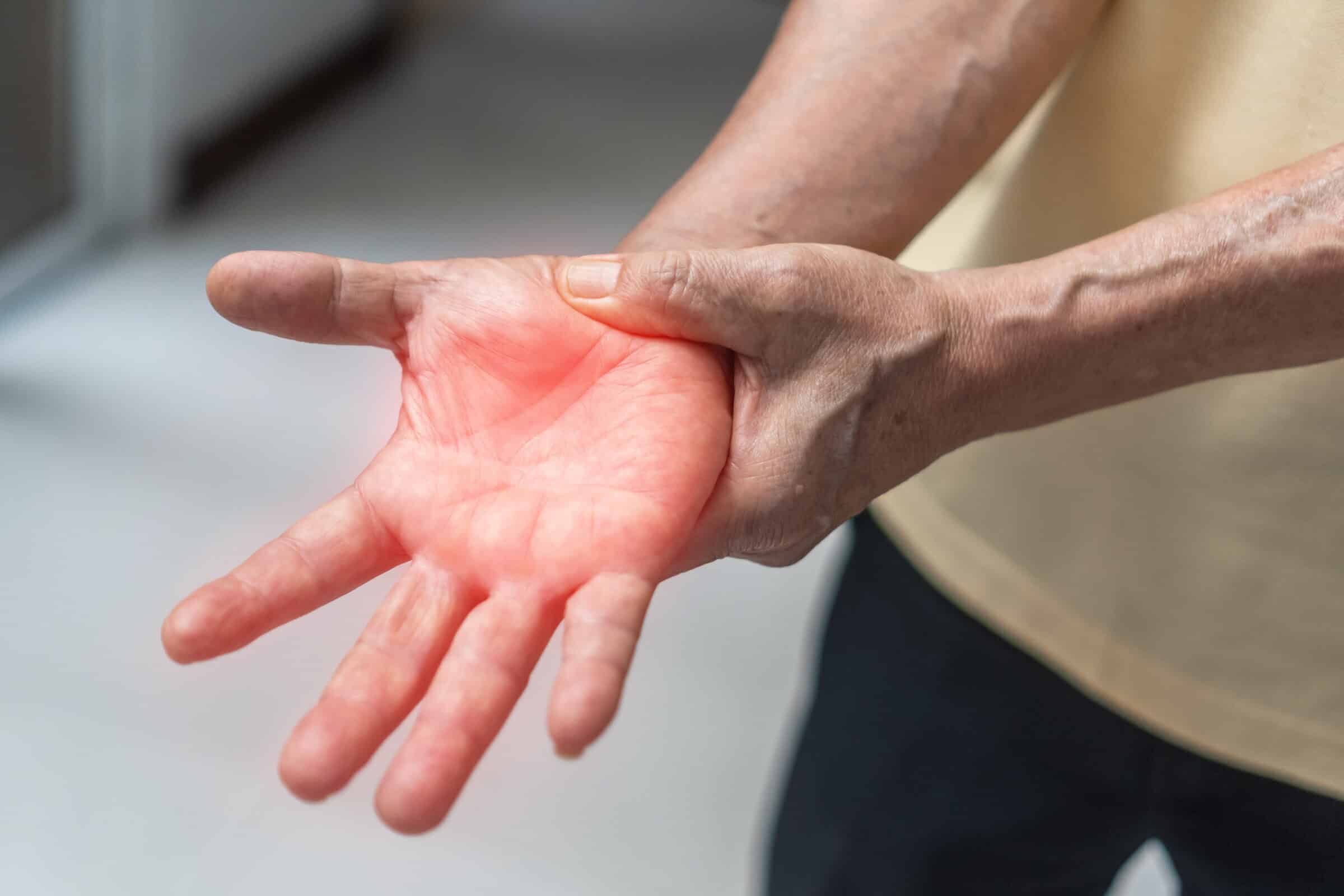
Navigating VA disability claims can be daunting, especially when dealing with conditions like neuropathy. This comprehensive guide provides veterans with clear, actionable information on how to successfully file and get the disability rating they deserve for neuropathy.
Neuropathy can significantly impact a veteran’s quality of life, leading to chronic pain, numbness, and mobility issues. Understanding the VA’s requirements and processes is crucial for a successful claim. This article addresses common questions, clarifies rating criteria, and offers practical guidance on strengthening your claim. You’ll learn about proving service connection, understanding disability ratings, and what to do if you face a denial.
Here’s what we will cover:
- How to prove neuropathy on a VA claim
- VA disability ratings for peripheral neuropathy
- The VA disability rating schedule for neuropathy
- Understanding small fiber neuropathy claims
Understanding Neuropathy and its Impact
What is Neuropathy?
Neuropathy refers to nerve damage that can cause pain, numbness, tingling, and weakness, primarily in the hands and feet. Nerve damage is the cause of neuropathy. This damage disrupts the nerves’ ability to transmit signals, leading to a range of uncomfortable and debilitating symptoms.
Neuropathy can be caused by various factors, including diabetes, chemical exposure, infections, and traumatic injuries. For veterans, exposure to toxins, injuries sustained during service, and other health conditions can contribute to the development of neuropathy.
Common Symptoms of Neuropathy
The symptoms of neuropathy can vary depending on the type and severity of nerve damage. Symptoms are diverse. Veterans might experience sharp, shooting pain, a burning sensation, or a gradual loss of sensation. Muscle weakness, coordination problems, and sensitivity to touch are also common. These symptoms can significantly impact daily activities, affecting mobility, sleep, and overall quality of life.
If you’re experiencing these symptoms, it’s essential to seek medical evaluation and explore the possibility of filing a VA disability claim.
Proving Neuropathy on a VA Claim
How to Prove Neuropathy on a VA Claim?
To prove neuropathy on a VA claim, you’ll need to provide a diagnosis from a medical professional, evidence of a service connection, and documentation of the severity of your condition. A diagnosis must come from a medical professional. The VA requires a clear diagnosis of neuropathy, supported by medical records, nerve conduction studies, and physical examination findings.
Establishing a service connection is crucial. This means showing that your neuropathy is directly related to your military service. This can be achieved through service records, medical documentation of incidents or exposures during service, and nexus letters from medical experts linking your condition to your service.
Gathering Medical Evidence
Collect all relevant medical records, including doctor’s reports, nerve conduction studies, and treatment records. These documents should clearly outline the diagnosis, severity, and impact of your neuropathy. Having a well-documented medical history strengthens your claim.
Consider obtaining a medical nexus letter from a qualified healthcare professional. This letter should provide a clear opinion linking your neuropathy to your military service. A strong nexus letter can significantly increase your chances of a successful claim.
Establishing Service Connection
Service connection can be established in several ways, including direct service connection, secondary service connection, and aggravation. It can be done in various ways.
Direct service connection requires proving that your neuropathy is a direct result of an event, injury, or illness that occurred during your military service. Secondary service connection applies when your neuropathy is caused or worsened by another service-connected condition, such as diabetes. Aggravation occurs when your pre-existing neuropathy was worsened by your military service.
VA Disability Ratings for Peripheral Neuropathy
What VA Disability Rates for Peripheral Neuropathy are Available?
VA disability ratings for peripheral neuropathy are determined based on the severity of nerve damage and the resulting functional impairment. Ratings range from 0% to 100%, depending on the extent of sensory loss and motor impairment. The severity of nerve damage decides the rating.
The VA uses Diagnostic Code 8520 to rate peripheral neuropathy. The rating criteria consider factors such as the degree of sensory loss (numbness, tingling, pain) and motor impairment (weakness, loss of coordination) in the affected limbs.
Understanding Diagnostic Code 8520
Diagnostic Code 8520 is the key to understanding how the VA rates peripheral neuropathy. This code outlines specific criteria for different disability ratings based on the severity and impact of the condition. The criteria are specific.
A 10% rating is assigned for mild to moderate sensory loss. A 20% rating is given for moderate sensory loss with some motor impairment. Higher ratings of 40% or more are reserved for severe sensory and motor deficits that significantly impact the use of the affected limbs.
How to Get Rated 20% for VA Disability for Neuropathy?
To achieve a 20% disability rating for neuropathy, you typically need to demonstrate moderate sensory loss with some motor impairment in the affected limbs. It’s a must to demonstrate sensory loss. This means showing that you have noticeable numbness, tingling, or pain, along with some weakness or loss of coordination.
Provide detailed medical evidence, including nerve conduction studies and physical examination findings, to support your claim. A nexus letter from a medical professional linking your condition to your military service can also be beneficial.
VA Disability for Small Fiber Neuropathy from Chemical Exposure
What is the VA Disability for Small Fiber Neuropathy from Chemical Exposure?
Veterans exposed to chemicals during their military service may develop small fiber neuropathy. The disability rating is based on the severity of the condition and its impact on daily function, similar to other forms of neuropathy. Chemical exposure can cause this.
Small fiber neuropathy affects the small nerve fibers that transmit pain and temperature sensations. Symptoms can include burning pain, sensitivity to touch, and autonomic dysfunction (e.g., abnormal sweating, heart rate irregularities). Proving a connection between chemical exposure and small fiber neuropathy can be challenging but is essential for a successful claim.
Linking Chemical Exposure to Neuropathy
To establish a service connection for small fiber neuropathy due to chemical exposure, you need to provide evidence of exposure during your military service. You also need medical documentation linking the exposure to your condition. It’s important to prove a connection.
Gather service records, exposure reports, and medical opinions to support your claim. Consider seeking assistance from a qualified attorney or veterans service organization to navigate the complexities of these claims.
VA Disability Rating for Diabetic Neuropathy
Understanding Diabetic Neuropathy
Diabetic neuropathy is a common complication of diabetes, affecting many veterans with service-connected diabetes. The VA disability rating for diabetic neuropathy is based on the severity of nerve damage and its impact on function. Diabetes can cause nerve damage.
Symptoms of diabetic neuropathy can include pain, numbness, tingling, and weakness in the hands and feet. In severe cases, it can lead to foot ulcers, infections, and even amputation. Proper management of diabetes and neuropathy is crucial for maintaining your health and well-being.
How the VA Rates Diabetic Neuropathy
The VA rates diabetic neuropathy using Diagnostic Code 8520, the same code used for other forms of peripheral neuropathy. The rating criteria consider the degree of sensory loss and motor impairment in the affected limbs. The rating considers sensory loss.
Veterans with diabetic neuropathy should provide detailed medical evidence, including blood sugar levels, nerve conduction studies, and records of any related complications (e.g., foot ulcers). A clear connection between your diabetes and neuropathy must be established to support your claim.
Appealing a Denied Neuropathy Claim
What to Do If Your Claim is Denied
If your VA disability claim for neuropathy is denied, don’t lose hope. You have the right to appeal the decision. It’s crucial to understand the reasons for the denial and gather additional evidence to support your appeal. Appeals are possible.
The appeals process typically involves submitting a Notice of Disagreement (NOD) and then pursuing one of several appeal options, such as a Higher-Level Review, a Supplemental Claim, or a direct appeal to the Board of Veterans’ Appeals. Each option has its own requirements and timelines, so it’s essential to choose the one that best fits your situation.
Gathering Additional Evidence
Strengthen your appeal by gathering additional evidence, such as updated medical records, additional nexus letters, and personal statements from yourself and others who can attest to the impact of your neuropathy. Additional evidence helps.
Consider seeking assistance from a qualified attorney or veterans service organization to navigate the appeals process. They can provide valuable guidance and support throughout the process.
Conclusion & Key Takeaways
Successfully navigating a VA disability claim for neuropathy requires a thorough understanding of the VA’s requirements, a well-documented medical history, and a clear service connection. While the process can be challenging, persistence and a well-prepared claim can significantly increase your chances of success.
Remember, you’re not alone in this journey. Resources are available to help you navigate the VA system and fight for the benefits you deserve. Don’t hesitate to seek assistance from qualified professionals and veterans service organizations.
Ready to take the next step? Contact us today for a free case evaluation and let VetsForever help you get the disability rating you deserve!
Key Takeaways
How do I prove neuropathy on a VA claim?
You must provide a medical diagnosis, establish a service connection, and document the severity of your condition with medical records and nexus letters.
What VA disability rates are available for peripheral neuropathy?
Ratings range from 0% to 100%, based on the severity of sensory loss and motor impairment, as determined by Diagnostic Code 8520.
What is the VA disability for small fiber neuropathy from chemical exposure?
The disability rating depends on the severity and impact on daily function, requiring evidence of chemical exposure during service and a medical link to your condition.
How does the VA rate diabetic neuropathy?
The VA rates diabetic neuropathy using Diagnostic Code 8520, considering the degree of sensory loss and motor impairment in the affected limbs, along with a clear connection to your service-connected diabetes.

